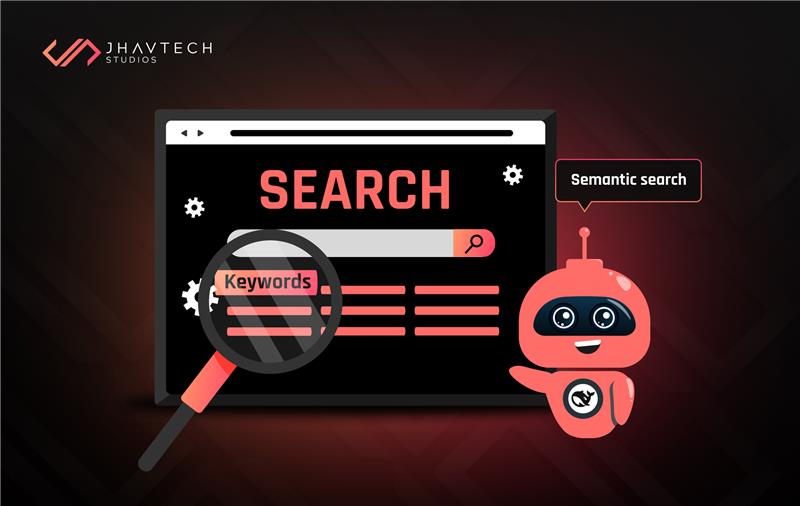1. Introduction
In this guide, we’ll explore how to build a simple yet powerful semantic search engine using
Node.js, MongoDB and vector embeddings generated by the Xenova/multi-qa-MiniLM-L6-cos-v1
model. This application allows you to:
- Insert user profiles.
- Generate embeddings for their bios
- Search for them using semantic similarity based on contextual meanings rather than exact
- keyword matching.
2. Project Prerequisites
Before running the script, make sure you have the following installed :
2.1. Install Node.js and npm
If you don’t have Node.js installed, download it from:
Node.js Official Website
To verify your installation:
node -v
npm -v2.2 Setting up MongoDB:
Before building the search engine, you need to install MongoDB and create a new database.
2.2.1 Install MongoDB
To get started, you need to install MongoDB. Follow the steps below for your respective operating
system.
On Ubuntu
1. Import the MongoDB public GPG Key:
wget -qO - https://www.mongodb.org/static/pgp/server-7.0.asc | gpg --dearmor | sudo tee
/usr/share/keyrings/mongodb-server-7.0.gpg > /dev/null2. Create a list file for MongoDB:
echo "deb [ signed-by=/usr/share/keyrings/mongodb-server-7.0.gpg ] https://repo.mongodb.org/apt/ubuntu
focal/mongodb-org/7.0 multiverse" | sudo tee /etc/apt/sources.list.d/mongodb-org-7.0.list3. Install MongoDB:
sudo apt update
sudo apt install -y mongodb-org4. Start the MongoDB service:
sudo systemctl start mongod
sudo systemctl enable mongodb5. Verify the installation:
mongod --versionOn Windows
1. Download the MongoDB installer from:
3. Follow the installation instructions and start the MongoDB service.
4. Verify the installation by opening Command Prompt and running:
mongod --version5. Start the MongoDB service:
net start MongoDBOn macOS
Install MongoDB using Homebrew:
brew tap mongodb/brew
brew install mongodb-community@7.0
brew services start mongodb/brew/mongodb-community2.2.2 Running MongoDB
Once MongoDB is installed, run the server:
mongodTo connect to MongoDB:
mongo
2.2.3 Creating a MongoDB Database
1. Open MongoDB shell by running:
mongosh2. Create a new database:
use <YOUR_DB_NAME>3. Create a users collection:
db.createCollection("<YOUR_COLLECTION_NAME>")4. Verify that the collection was created:
show collections2.3 Installing Dependencies
1. Initialize a Node.js project (if not already created):
npm init -y2. Install the required dependencies:
npm install express cors body-parser mongodb @xenova/transformers2.4 Connecting MongoDB to Node.js
To connect MongoDB to your Node.js project, follow these steps:
Use the following connection string in your index.js file:
const MONGO_URI = "mongodb://localhost:27017";
const DB_NAME = "<YOUR_DB_NAME>";
const COLLECTION_NAME = "<YOUR_COLLECTION_NAME>";
const client = new MongoClient(MONGO_URI);
await client.connect();
const db = client.db(DB_NAME);
const usersCollection = db.collection(COLLECTION_NAME);3. . Project Setup
Technologies Used :
Node.js:
For building the backend server.
MongoDB:
To store user data along with the generated vector embeddings.
Express.js:
To create API routes for CRUD operations.
Xenova/Transformers:
For generating vector embeddings from text.
Cosine Similarity:
To compare embeddings and find the closest matches.
Folder Structure
/index.js → Main backend server file
/package.json → Project dependencies
/mongodb → Database for storing user info and vector embeddingsEnvironment
- MongoDB running locally ( mongodb://localhost:27017 )
- The application listens on port 3000 .
4. Key Components Explained
4.1 Dependencies and Middleware
import express from "express";
import cors from "cors";
import bodyParser from "body-parser";
import { MongoClient } from "mongodb";
import { pipeline } from "@xenova/transformers";express:
: Web framework to create server and handle routing.
cors:
Allows cross-origin resource sharing, making the API accessible from different origins.
body-parser:
Parses incoming JSON requests.
MongoClient:
Used to connect to MongoDB.
pipeline :
Imports the Xenova embedding model pipeline for feature extraction.
MongoDB Connection
const MONGO_URI = "mongodb://localhost:27017";
const DB_NAME = "<YOUR_DB_NAME>";
const COLLECTION_NAME = "<YOUR_COLLECTION_NAME>";
const client = new MongoClient(MONGO_URI);
await client.connect();
const db = client.db(DB_NAME);
const usersCollection = db.collection(COLLECTION_NAME);- Connects to the local MongoDB server at localhost:27017 .
- Uses the database and collection to store the user data.
- await client.connect() establishes a connection with the MongoDB instance.
4.3 Loading the Embedding Model
const generateEmbedding = await pipeline("feature-extraction", "Xenova/multi-qa-MiniLM-L6-cos-v1");- Initializes the Xenova model for text embedding generation.
- The model uses feature-extraction to convert textual data (user bios and search queries) into
- numerical vector representations.
4.4 Cosine Similarity Function
function cosineSimilarity(vec1, vec2) {
const dotProduct = vec1.reduce((sum, val, i) => sum + val * vec2[i], 0);
const magnitudeA = Math.sqrt(vec1.reduce((sum, val) => sum + val * val, 0));
const magnitudeB = Math.sqrt(vec2.reduce((sum, val) => sum + val * val, 0));
return dotProduct / (magnitudeA * magnitudeB);
}- Computes cosine similarity between two vectors.
- Formula: similarity = A – B / ||A|| x ||B||
- Outputs a score between 0 and 1 indicating similarity
4.5 Server Initialization
app.listen(3000, "0.0.0.0", () => {
console.log("Server running on port 3000");
});- Starts the server on port 3000 .
- Listens on all network interfaces ( 0.0.0.0 ).
4.6 API Routes
4.6.1 Fetching All Users
app.get("/users", async (req, res) => {
try {
const users = await usersCollection.find({}).toArray();
res.json({ totalUsers: users.length, users });
} catch (error) {
console.log(error);
res.status(500).json({ error: "Internal Server Error" });
}
});- Fetches all users from the collection.
- Returns the total number of users along with their details in JSON format.
4.6.2 Deleting All Users
app.delete("/users", async (req, res) => {
try {
const result = await usersCollection.deleteMany({});
res.json({ message: "All users deleted successfully", deletedCount: result.deletedCount });
} catch (error) {
console.error(error);
res.status(500).json({ error: "Internal Server Error" });
}
});- Deletes all users from the database. •
- Returns the number of deleted users.
4.6.3 Adding New Users
app.post("/add-users", async (req, res) => {
try {
const users = req.body.users;
if (!users || !Array.isArray(users)) {
return res.status(400).json({ error: "Invalid users data" });
}
for (let user of users) {
const embeddingTensor = await generateEmbedding(user.bio, { pooling: "mean", normalize: true
});
user.embedding = Array.from(embeddingTensor.data);
}
await usersCollection.insertMany(users);
res.json({ message: "Users added successfully" });
} catch (error) {
res.status(500).json({ error: error.message });
}
});- Accepts a list of users (with name , email , and bio ) in the request body
- Generates embeddings for each user’s bio using the Xenova model.
- Embeddings are converted from tensors to arrays ( Array.from(embeddingTensor.data ) ) for MongoDB storage.
- •Stores the users with their embeddings in the MongoDB collection.
4.6.4 Searching for Users
app.post("/search", async (req, res) => {
try {
const { query } = req.body;
const queryEmbeddingTensor = await generateEmbedding(query, { pooling: "mean", normalize: true
});
const queryEmbedding = Array.from(queryEmbeddingTensor.data);
const users = await usersCollection.find().toArray();
const results = users.map((user) => ({
...user,
similarity: cosineSimilarity(queryEmbedding, user.embedding),
}));
const filteredResults = results
.filter(user => user.similarity >= 0.3)
.sort((a, b) => b.similarity - a.similarity)
.slice(0, 5);
res.json(filteredResults);
} catch (error) {
res.status(500).json({ error: "Internal Server Error" });
}
});- Accepts a search query in the request body. •
- Generates an embedding vector for the query. •
- Compares the query vector with each user embedding using cosine similarity. •
- Filters results with a similarity score above 0.3 . •
- Returns the top 5 most relevant users.
5. Running the Script
Once you’ve added the code, you can start the application by following these steps:
5.1 Start MongoDB
Ensure MongoDB is running in the background:
mongod --dbpath <your-database-path>If you’re using MongoDB Atlas (Cloud MongoDB), update the connection string in the script with
your Atlas connection URL.
5.2 Start the Node.js Server
Run the server with:
node index.jsOnce the server is running, you should see:
Server running on port 3005.3 Test the APIs in Postman
Use Postman or any REST client to test the API endpoints.

- Endpoint: POST http://localhost:3000/add-users •
- Request Body:
{
"users": [
{
"name": "Alice",
"email": "alice@example.com",
"bio": "AI researcher specializing in deep learning and NLP."
},
{
"name": "Bob",
"email": "bob@example.com",
"bio": "Backend developer with expertise in Node.js, MongoDB, and GraphQL."
}
]
}
- Endpoint: GET http://localhost:3000/users •
- Response Body:
{
"totalUsers": 2,
"users": [
{
"name": "Alice",
"email": "alice@example.com",
"bio": "AI researcher specializing in deep learning and NLP."
},
{
"name": "Bob",
"email": "bob@example.com",
"bio": "Backend developer with expertise in Node.js, MongoDB, and GraphQL."
}
]
}
- Endpoint: DELETE http://localhost:3000/users

- Endpoint: POST http://localhost:3000/search •
- Request Body:
{
"query": "natural language processing"
}- Response Body:
[
{
"_id": "67d2b0f3010dd52492d9b3be",
"name": "Alice",
"email": "alice@example.com",
"bio": "AI researcher specializing in deep learning and NLP.",
"embedding": [
-0.011950308457016945,
-0.06424717605113983,
..
..
..
-0.004725316539406776,
-0.14137263596057892
],
"similarity": 0.62751234530881516
}
]6. Semantic Search Flow
1. User Data Insertion:
The system accepts new user data, generates vector embeddings, and
stores them in MongoDB.
2. Query Embedding:
When a search query is entered, the system generates its vector
representation.
3. Cosine Similarity Matching:
The query vector is compared with all stored vectors, and the
most similar users are returned.
7. GitHub Repository
You can access the complete source code for this project on GitHub:
https://github.com/DheerajKumarMamidi/AI-Semantic-Search-Engine
8. Conclusion
This project demonstrates how to build a semantic search engine using vector embeddings and
cosine similarity. It efficiently searches for users based on the meaning of the query rather than just matching keywords, making it ideal for building intelligent recommendation systems or knowledge retrieval applications.
.svg)






